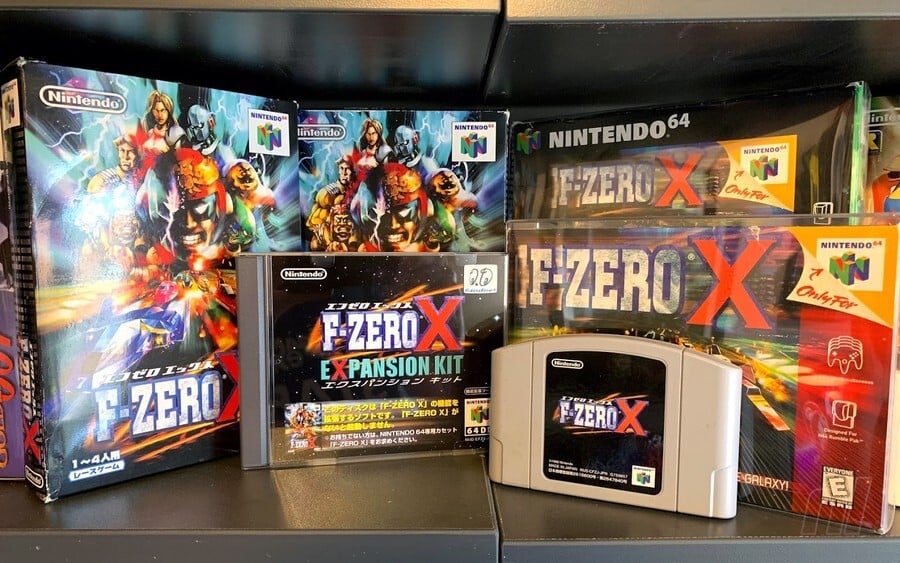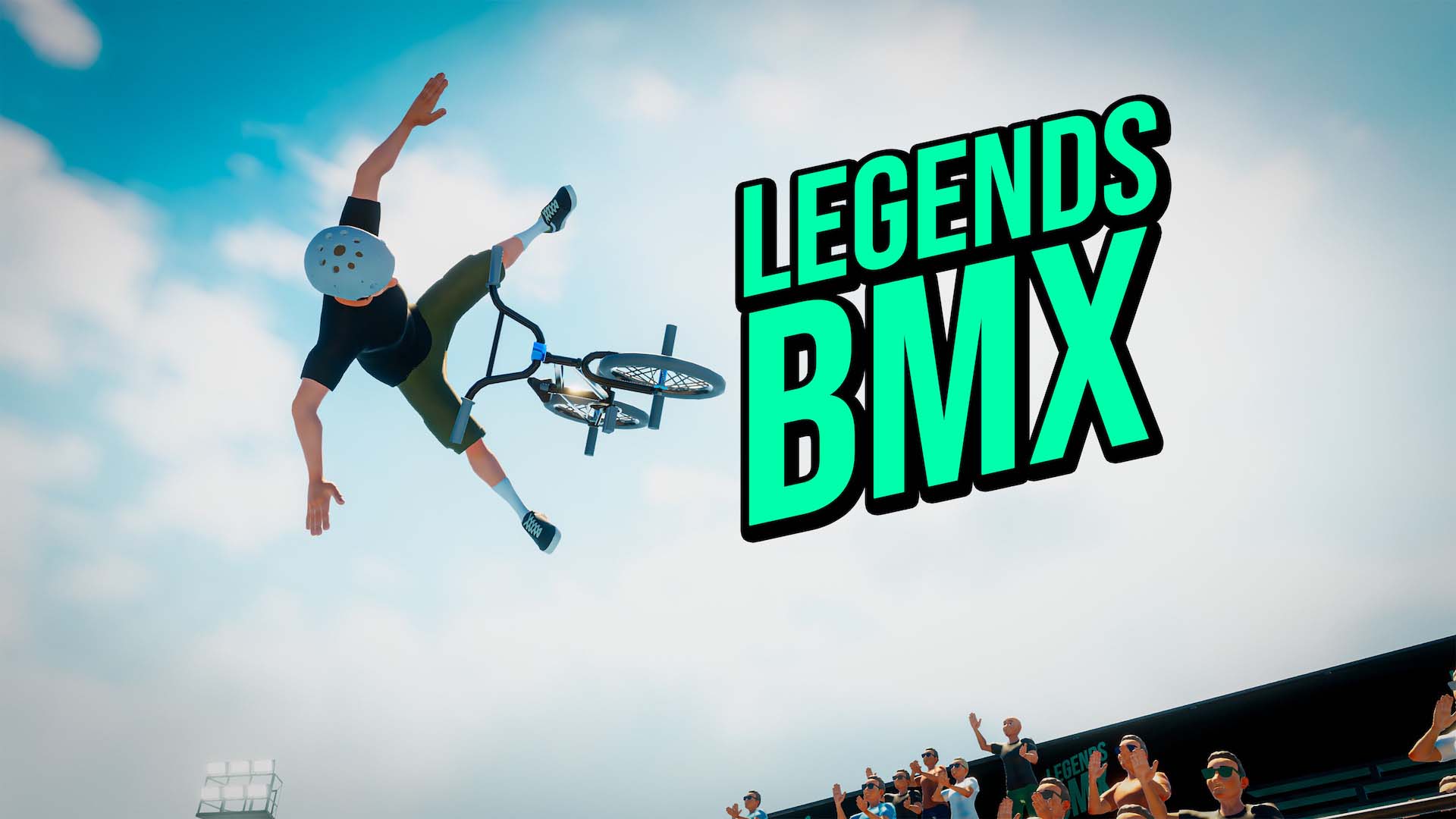
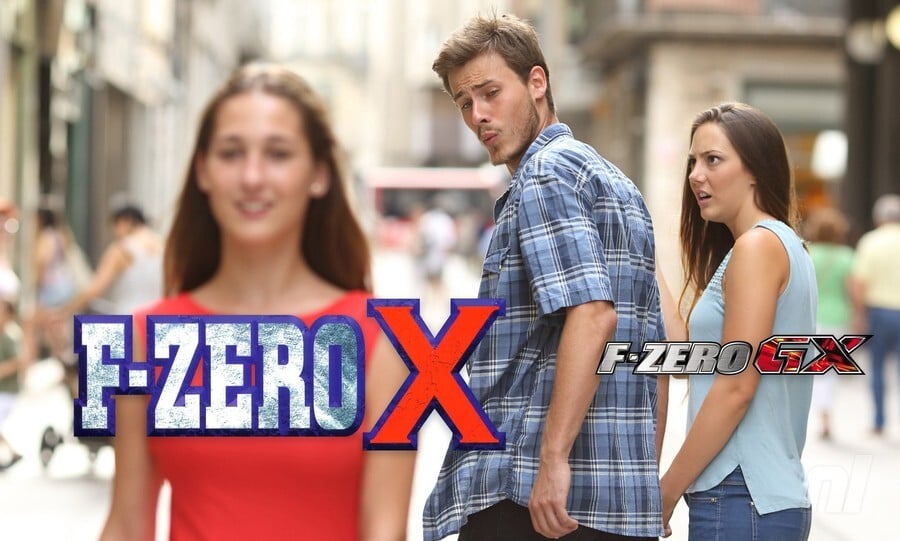
F-Zero X launched on 14th July 1998 in Japan, meaning the N64 entry in this dormant Nintendo racing series is, somehow, inexplicably, 25 years old now. A quarter-century! Blimey.
As such, we’re republishing this article from 2019 penned by Nintendo Life founder and CEO Ant Dickens to curry favour with top brass celebrate an epic game — the most glittering jewel in the Formula Zero crown.
Remember, F-Zero X is now playable on Switch via the Switch Online Expansion pack. There you go, that’s your plan for the evening, right there. Enjoy!
There is a bit of a running joke here within the Nintendo Life team; it’s a well-known fact that I’m a huge fan of F-Zero X on the Nintendo 64, and despite my strong beliefs on the subject, almost everyone tries to convince me otherwise as to which is the best F-Zero.
You’ll find references to this hidden across Nintendo Life, our social media channels and even spilling over into private areas, such as our Slack loading messages. The most recent example is a meme tweet, which was created in a moment of madness during what should have been a top-level business meeting and finally compelled me to write this article.
It’s just a bit of fun… or is it? Let’s first travel back to 1998 and find out what all the fuss is about. The Nintendo 64 had been out for almost a year here in Europe and had (thus far) been severely lacking any decent racing games. Annoyingly, Sony’s PlayStation had been awash with quality in the genre, including WipEout, Destruction Derby and Ridge Racer. Over on the N64, it had been the likes of Crusin’ USA, San Francisco Rush and Top Gear Rally. Not really a fair fight; heck, even the third-placed Sega Saturn was blessed with better racers than Nintendo’s console.
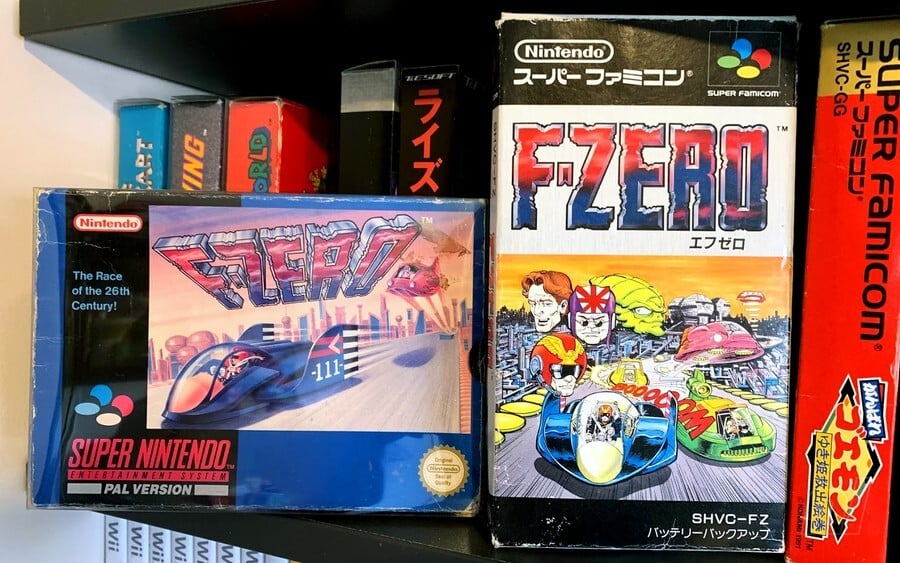
But Nintendo still had an existing racing franchise up its sleeve: F-Zero. Now, the original SNES game was a firm favourite with me on the previous generation system, a game I vividly remember going into Woolworths a few days after Christmas and buying with my Christmas money. The character and ship artwork was fantastic, and combined with the Mode 7 effect and memorable music, left a lasting impression on my young imagination.
Fast forward to 1997. F-Zero was no longer deemed relevant; its cartoonish graphics were outdated and childish. The super-cool and ultra-sleek WipEout was the new future of anti-grav racing. Nintendo needed a new take on the racing genre and called upon Shigeru Miyamoto to deliver something special and –more importantly – something cool. Apparently conceptualised around the time of Mario Kart 64’s development, Nintendo started work on ‘F-Zero 64’.
The best way to get news on upcoming video games back in those dates was either via word of mouth or print magazines. Sure, the internet existed back then (56k modem, anyone?) but it was still the magazine space that dominated the world of video game news and reviews. Any enthusiast gamer was buying at least 2 to 3 different magazines a month, and I was no different. These publications were a vital conduit between players and the industry.
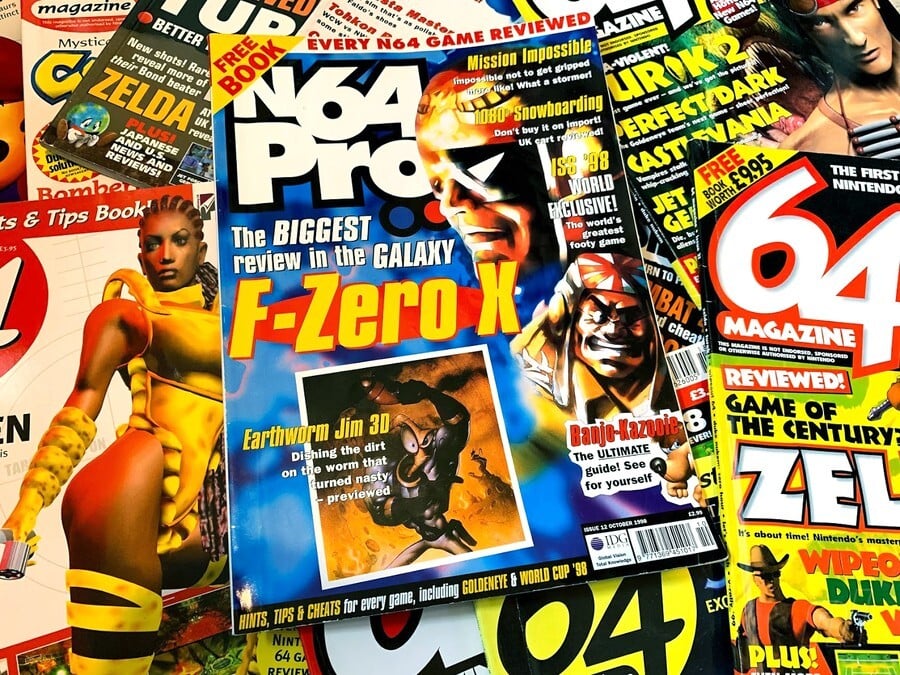
News of the 3D F-Zero sequel slowly started to appear in the news sections of the magazines, drip-feeding me with a screenshot here, a screenshot there and tiny snippets of information. It’s amazing to think today, but you’d literally have a paragraph of text and maybe a single screenshot as your only content for a month about an upcoming game. Still, I wouldn’t have had it any other way; your brain filled in the gaps as you imagined how it would be in meticulous detail.
These very early screenshots enraptured me; I believe they were taken from a Spaceworld demo reel in 1997 and showed the Blue Falcon speeding through a corkscrew track followed by a loop-the-loop. Unbelievable, I remember thinking. Sure, WipEout had some pretty cool tracks, but nothing like this; F-Zero 64 was looking more akin to a digital rollercoaster than a typical racing game.
In early 1998, magazines started publishing detailed previews of the game, now given its final title of F-Zero X. The game sounded amazing. Not only would it run at a solid 60fps whilst featuring 30 cars in a race, but all of them would be unique playable characters each with their own ship design. New attacking options had been added, along with a Death Race mode and the pièce de résistance, the X Cup.
Those that don’t know what the X Cup is, you are missing out. It’s a feature that randomly generates tracks into a Grand Prix meaning you’ll never play the same race twice. This blew my mind; an infinite number of tracks?! It sounded like witchcraft back in the late ’90s. Nintendo also promised an ‘Expansion Kit’ for its 64DD add-on that will allow gamers to design their own levels and ships. I had to have this game.
F-Zero X released in Japan in July 1998; it was the summer holidays for us in the UK, and the PAL version was scheduled for release later that November. I couldn’t wait that long and searched the back of my magazines for an import shop. I don’t remember which it was, but I remember it cost in the region of £70 to £80. Keep in mind that the average Switch game costs £40 today, and that gives some indication of how much this was to someone who had yet to earn a proper wage. A few days later it arrived; finally getting the game in my hands and ironically having never seen the sensational Japanese box art before, I was utterly gobsmacked. Wow, what a cover!
There was a problem, though. Nintendo didn’t care about us dirty importers and occasionally changed their carts to make them incompatible with converters. My converter didn’t work with the Japanese copy of F-Zero X, meaning I had to wait a further few days as I hastily ordered the latest model ‘N64 Passport’. Time was not wasted, however; I studied every inch of the box and manual whilst waiting for the new converter to arrive.
Finally, I had the game running and boy was it fast, something that static screenshots in magazines couldn’t even begin to convey. I quickly found that Jody Summers’ White Cat was my ship of choice, suiting my driving style, and I continued to pour hours and hours into the game, getting better and better and finally completing it on ‘master’ difficulty. Legend.
Weirdly, F-Zero X is one of that handful of games that simply ‘works’ with the irregular shaped Nintendo 64 controller. Much like Z-Targeting in Zelda, the control scheme just feels completely natural to me. The analogue stick provided such a precise degree of control in F-Zero X, the nuance in steering was exceptional. Interestingly, this was so noticeably lacking when the game was ported to Wii U many years later, myself and other fans made noise and Nintendo eventually applied a fix. You’re welcome.
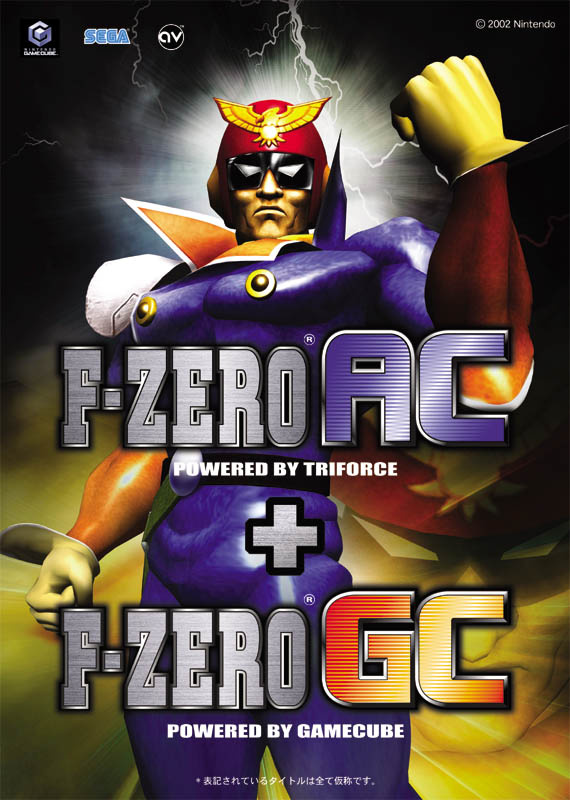
Anyway, let’s address the elephant in the article: F-Zero AX/GX. Hopefully, by now I’ve convinced you that I like myself a bit of F-Zero. So when it was announced that Nintendo and SEGA (remember them?) were working together on F-Zero AC+GC using the Arcade/GameCube ‘Triforce’ platform, you could say I was excited (in truth, I was very excited). Early screenshots and videos surfaced online this time and wow, what a good-looking game. The graphics were incredible and the music was exhilarating; this was shaping up to be my dream F-Zero sequel, I could not wait.
So much so, that I started work on a fan website and somehow managed to buy the domain names fzerogx.com and fzeroax.com; as a teenager this is what I did – I got so excited about games that I made websites about them. Who knew I’d go on to make Nintendo Life, right?
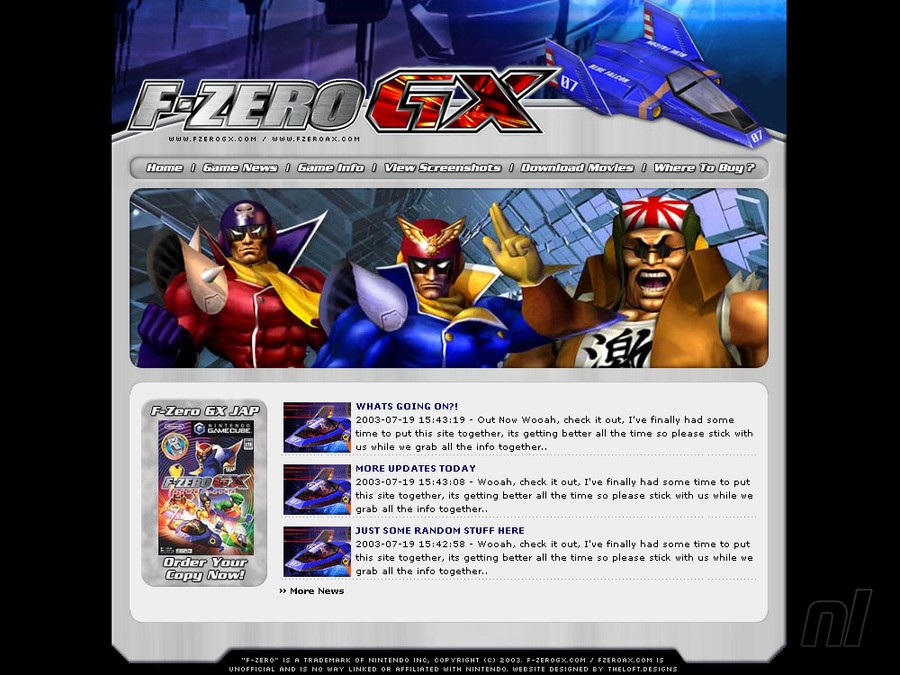
This time I had no problem importing F-Zero GX from Japan at launch as I had a Japanese GameCube. Sadly, the hype was not real for me. Let’s be clear, I don’t think GX is a bad game – far from it – but for me, it simply changed the gameplay too far from the formula I knew and loved in the N64 title.
Understandably, GX feels like an aggressive arcade racer (it’s developed by SEGA, after all), whereas my love for X was born in the precise controls with sweeping corners and boosting to the line. GX is harsh where X is subtle; it’s just a different style of gameplay, intended for a different audience: arcade players. In my opinion, you could almost use the contrast in styles to compare Mario and Sonic, or even Nintendo and SEGA. Both are valid, both are good, but both are definitely different.

Over the years, I’ve learned to love GX/AX for what it is. I have fond memories playing the AX version in arcades in the Far East and often find myself checking prices of retired cabinets on eBay (surely it would fit in the garage, right?). The truth though, is that F-Zero X is the best F-Zero, in my humble opinion. It’s the most Nintendo version of F-Zero. If you prefer the original, the GameCube version or for some crazy reason one of the Game Boy entries then don’t worry, we can still be friends; we’re united as one, all fans of the F-Zero series as a whole, and that is what counts. But if you don’t think X is the best of the bunch, then you’re wrong.
What do you think, Nintendo? Time for another? Let us know if Ant’s memories ring true for you by posting a comment.
Which is the best F-Zero? (438 votes)
- F-Zero (1990, SNES)
- BS F-Zero Grand Prix (1996, SNES) 0%
- BS F-Zero Grand Prix 2 (1997, SNES) 0%
- F-Zero X (1998, N64)
- F-Zero X Expansion Kit (2000, 64DD)
- F-Zero Maximum Velocity (2001, GBA)
- F-Zero GX (2003, GameCube)
- F-Zero AX (2003, Arcade)
- F-Zero GP Legend (2003, GBA)
- F-Zero Climax (2004, GBA)
Please login to vote in this poll.

F-Zero X launched on 14th July 1998 in Japan, meaning the N64 entry in this dormant Nintendo racing series is, somehow, inexplicably, 25 years old now. A quarter-century! Blimey.
As such, we’re republishing this article from 2019 penned by Nintendo Life founder and CEO Ant Dickens to curry favour with top brass celebrate an epic game — the most glittering jewel in the Formula Zero crown.
Remember, F-Zero X is now playable on Switch via the Switch Online Expansion pack. There you go, that’s your plan for the evening, right there. Enjoy!
There is a bit of a running joke here within the Nintendo Life team; it’s a well-known fact that I’m a huge fan of F-Zero X on the Nintendo 64, and despite my strong beliefs on the subject, almost everyone tries to convince me otherwise as to which is the best F-Zero.
You’ll find references to this hidden across Nintendo Life, our social media channels and even spilling over into private areas, such as our Slack loading messages. The most recent example is a meme tweet, which was created in a moment of madness during what should have been a top-level business meeting and finally compelled me to write this article.
It’s just a bit of fun… or is it? Let’s first travel back to 1998 and find out what all the fuss is about. The Nintendo 64 had been out for almost a year here in Europe and had (thus far) been severely lacking any decent racing games. Annoyingly, Sony’s PlayStation had been awash with quality in the genre, including WipEout, Destruction Derby and Ridge Racer. Over on the N64, it had been the likes of Crusin’ USA, San Francisco Rush and Top Gear Rally. Not really a fair fight; heck, even the third-placed Sega Saturn was blessed with better racers than Nintendo’s console.

But Nintendo still had an existing racing franchise up its sleeve: F-Zero. Now, the original SNES game was a firm favourite with me on the previous generation system, a game I vividly remember going into Woolworths a few days after Christmas and buying with my Christmas money. The character and ship artwork was fantastic, and combined with the Mode 7 effect and memorable music, left a lasting impression on my young imagination.
Fast forward to 1997. F-Zero was no longer deemed relevant; its cartoonish graphics were outdated and childish. The super-cool and ultra-sleek WipEout was the new future of anti-grav racing. Nintendo needed a new take on the racing genre and called upon Shigeru Miyamoto to deliver something special and –more importantly – something cool. Apparently conceptualised around the time of Mario Kart 64’s development, Nintendo started work on ‘F-Zero 64’.
The best way to get news on upcoming video games back in those dates was either via word of mouth or print magazines. Sure, the internet existed back then (56k modem, anyone?) but it was still the magazine space that dominated the world of video game news and reviews. Any enthusiast gamer was buying at least 2 to 3 different magazines a month, and I was no different. These publications were a vital conduit between players and the industry.

News of the 3D F-Zero sequel slowly started to appear in the news sections of the magazines, drip-feeding me with a screenshot here, a screenshot there and tiny snippets of information. It’s amazing to think today, but you’d literally have a paragraph of text and maybe a single screenshot as your only content for a month about an upcoming game. Still, I wouldn’t have had it any other way; your brain filled in the gaps as you imagined how it would be in meticulous detail.
These very early screenshots enraptured me; I believe they were taken from a Spaceworld demo reel in 1997 and showed the Blue Falcon speeding through a corkscrew track followed by a loop-the-loop. Unbelievable, I remember thinking. Sure, WipEout had some pretty cool tracks, but nothing like this; F-Zero 64 was looking more akin to a digital rollercoaster than a typical racing game.
In early 1998, magazines started publishing detailed previews of the game, now given its final title of F-Zero X. The game sounded amazing. Not only would it run at a solid 60fps whilst featuring 30 cars in a race, but all of them would be unique playable characters each with their own ship design. New attacking options had been added, along with a Death Race mode and the pièce de résistance, the X Cup.
Those that don’t know what the X Cup is, you are missing out. It’s a feature that randomly generates tracks into a Grand Prix meaning you’ll never play the same race twice. This blew my mind; an infinite number of tracks?! It sounded like witchcraft back in the late ’90s. Nintendo also promised an ‘Expansion Kit’ for its 64DD add-on that will allow gamers to design their own levels and ships. I had to have this game.
F-Zero X released in Japan in July 1998; it was the summer holidays for us in the UK, and the PAL version was scheduled for release later that November. I couldn’t wait that long and searched the back of my magazines for an import shop. I don’t remember which it was, but I remember it cost in the region of £70 to £80. Keep in mind that the average Switch game costs £40 today, and that gives some indication of how much this was to someone who had yet to earn a proper wage. A few days later it arrived; finally getting the game in my hands and ironically having never seen the sensational Japanese box art before, I was utterly gobsmacked. Wow, what a cover!
There was a problem, though. Nintendo didn’t care about us dirty importers and occasionally changed their carts to make them incompatible with converters. My converter didn’t work with the Japanese copy of F-Zero X, meaning I had to wait a further few days as I hastily ordered the latest model ‘N64 Passport’. Time was not wasted, however; I studied every inch of the box and manual whilst waiting for the new converter to arrive.
Finally, I had the game running and boy was it fast, something that static screenshots in magazines couldn’t even begin to convey. I quickly found that Jody Summers’ White Cat was my ship of choice, suiting my driving style, and I continued to pour hours and hours into the game, getting better and better and finally completing it on ‘master’ difficulty. Legend.
Weirdly, F-Zero X is one of that handful of games that simply ‘works’ with the irregular shaped Nintendo 64 controller. Much like Z-Targeting in Zelda, the control scheme just feels completely natural to me. The analogue stick provided such a precise degree of control in F-Zero X, the nuance in steering was exceptional. Interestingly, this was so noticeably lacking when the game was ported to Wii U many years later, myself and other fans made noise and Nintendo eventually applied a fix. You’re welcome.

Anyway, let’s address the elephant in the article: F-Zero AX/GX. Hopefully, by now I’ve convinced you that I like myself a bit of F-Zero. So when it was announced that Nintendo and SEGA (remember them?) were working together on F-Zero AC+GC using the Arcade/GameCube ‘Triforce’ platform, you could say I was excited (in truth, I was very excited). Early screenshots and videos surfaced online this time and wow, what a good-looking game. The graphics were incredible and the music was exhilarating; this was shaping up to be my dream F-Zero sequel, I could not wait.
So much so, that I started work on a fan website and somehow managed to buy the domain names fzerogx.com and fzeroax.com; as a teenager this is what I did – I got so excited about games that I made websites about them. Who knew I’d go on to make Nintendo Life, right?

This time I had no problem importing F-Zero GX from Japan at launch as I had a Japanese GameCube. Sadly, the hype was not real for me. Let’s be clear, I don’t think GX is a bad game – far from it – but for me, it simply changed the gameplay too far from the formula I knew and loved in the N64 title.
Understandably, GX feels like an aggressive arcade racer (it’s developed by SEGA, after all), whereas my love for X was born in the precise controls with sweeping corners and boosting to the line. GX is harsh where X is subtle; it’s just a different style of gameplay, intended for a different audience: arcade players. In my opinion, you could almost use the contrast in styles to compare Mario and Sonic, or even Nintendo and SEGA. Both are valid, both are good, but both are definitely different.

Over the years, I’ve learned to love GX/AX for what it is. I have fond memories playing the AX version in arcades in the Far East and often find myself checking prices of retired cabinets on eBay (surely it would fit in the garage, right?). The truth though, is that F-Zero X is the best F-Zero, in my humble opinion. It’s the most Nintendo version of F-Zero. If you prefer the original, the GameCube version or for some crazy reason one of the Game Boy entries then don’t worry, we can still be friends; we’re united as one, all fans of the F-Zero series as a whole, and that is what counts. But if you don’t think X is the best of the bunch, then you’re wrong.
What do you think, Nintendo? Time for another? Let us know if Ant’s memories ring true for you by posting a comment.
Which is the best F-Zero? (438 votes)
- F-Zero (1990, SNES)
- BS F-Zero Grand Prix (1996, SNES) 0%
- BS F-Zero Grand Prix 2 (1997, SNES) 0%
- F-Zero X (1998, N64)
- F-Zero X Expansion Kit (2000, 64DD)
- F-Zero Maximum Velocity (2001, GBA)
- F-Zero GX (2003, GameCube)
- F-Zero AX (2003, Arcade)
- F-Zero GP Legend (2003, GBA)
- F-Zero Climax (2004, GBA)
Please login to vote in this poll.

